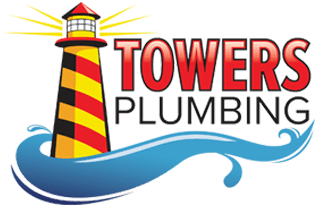
Utah winters can be harsh, and one of the most common plumbing issues homeowners face during freezing temperatures is frozen pipes. When water inside your pipes freezes, it expands, increasing the risk of cracked or burst pipes. This can lead to costly repairs, water damage, and major disruptions in your home. Understanding how to protect your plumbing system and taking proactive steps is crucial for homeowners looking to avoid emergency situations. Here’s how to prevent frozen pipes and what to do if they happen.
Why Pipes Freeze
Pipes freeze when the water inside drops below 32°F. Certain areas of your home are more vulnerable, including unheated basements, crawl spaces, attics, garages, and exterior walls. Pipes made of copper, PVC, or galvanized steel can all freeze under extreme conditions. The problem is compounded in older homes or homes with poor insulation, where heat doesn’t reach all areas of the plumbing system.
1. Insulate Vulnerable Pipes
Proper insulation is the first line of defense against frozen pipes. Foam pipe sleeves, insulation tape, or fiberglass insulation can protect exposed pipes from the cold. Make sure to cover both hot and cold water pipes, focusing on those in attics, basements, and unheated areas. Insulating your pipes not only reduces the risk of freezing but also improves energy efficiency in your home.
2. Keep a Consistent Temperature
During the winter, maintaining a consistent indoor temperature can prevent pipes from freezing. Even when you’re away, keep your thermostat set to at least 55°F. Avoid turning the heat off completely, especially in areas where pipes are located. Warm air circulation helps keep water flowing and prevents ice from forming.
3. Allow Faucets to Drip
Letting faucets drip during extreme cold snaps is a simple yet effective method to prevent frozen pipes. Flowing water—even at a trickle—reduces the chances of freezing by relieving pressure buildup inside the pipe. Focus on faucets connected to vulnerable pipes or those located far from the main water supply.
4. Seal Leaks and Drafts
Cold air entering your home can freeze pipes quickly. Inspect areas where pipes run through walls, floors, or ceilings and seal gaps or leaks. Caulking, weatherstripping, or foam sealant can block cold drafts and protect your plumbing system. Pay attention to doors, windows, and areas around vents where cold air may reach the pipes.
5. Open Cabinet Doors
Allowing warm air to circulate around pipes under sinks and in enclosed cabinets can reduce the risk of freezing. Opening cabinet doors in kitchens and bathrooms helps heat from the home reach these vulnerable areas, especially during extremely cold nights.
6. Use Heating Tape or Cables
For pipes that remain at high risk of freezing, consider installing electric heating tape or cables. These products provide supplemental heat directly to the pipe, maintaining a safe temperature even in subzero conditions. Always follow the manufacturer’s instructions to ensure safe and effective use.
7. Know When to Call for Help
Even with precautions, frozen pipes can occur. Signs include frost on the pipe, reduced water flow, or visible ice in the pipes. Attempting to thaw frozen pipes improperly can lead to bursting or serious damage. Contact professional frozen pipe repair Salt Lake City experts immediately if you suspect a frozen pipe or need assistance preventing emergencies. Towers Plumbing provides reliable emergency plumbing services Utah County to handle frozen pipe situations and restore water safely.
Preventing frozen pipes during Utah winters requires preparation and awareness. Proper insulation, consistent indoor temperatures, dripping faucets, and sealing drafts are all effective methods to protect your plumbing system. In the event of frozen pipes, professional frozen pipe repair Salt Lake City services ensure safe and efficient resolution. Don’t risk water damage this winter—take steps now to safeguard your home and maintain peace of mind. Contact Towers Plumbing for expert advice and emergency plumbing support.
